Cliff jumping is a favourite pastime in Hawaii enjoyed by both residents and thrill seekers coming in from around the world (as inspiring and thrilling as it is, cliff diving is an extreme sport and should only be attempted by experienced cliff divers)
Hawaii cliff jumping has a history of 250 years. The story is that the King of Maui would get his warriors to jump off a steep cliff into choppy waters to prove their bravery and loyalty. Over the years, it evolved into an extreme sport.
Hawaii, a rustic territory of varied landscapes, tropical beauty, beaches, and volcanoes, features numerous rocky cliffs perched over the ocean and natural pools.
Out of the many cliff diving spots here, we have picked out ten places, guaranteed to give you thrill seekers the best ever experience!
Big Island
South Point – Ka Lae
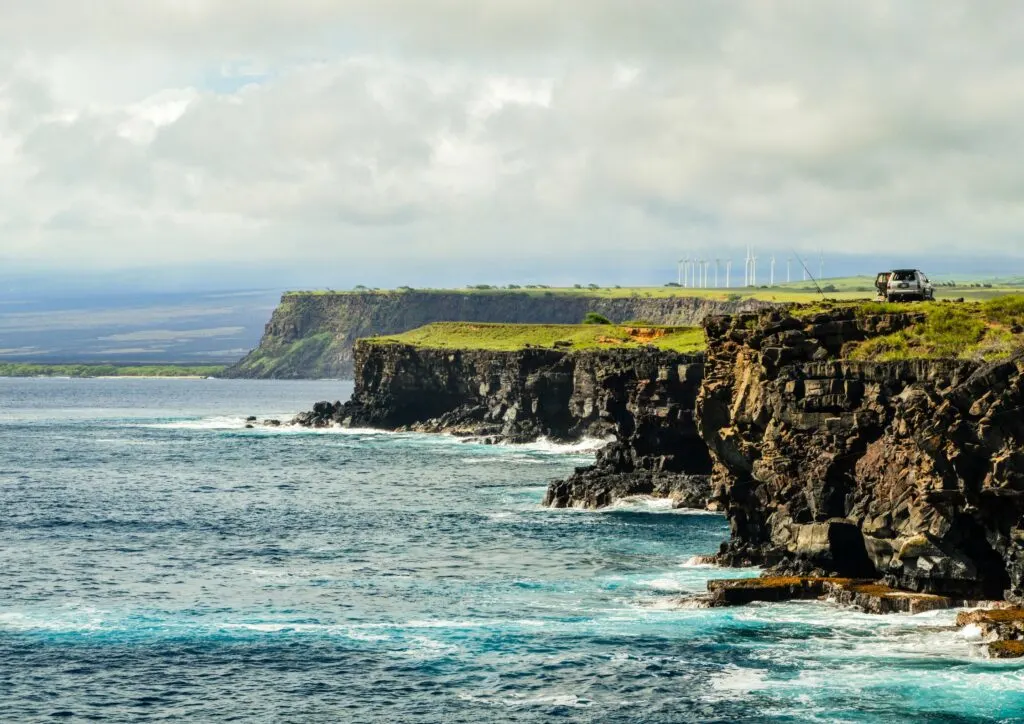
The southernmost point of the US (it’s even farther than the Florida Keys), the Big Island’s south point is a popular cliff diving spot and a historic landmark. This sheer drop into the deep blue ocean attracts young adventurists from around the world.
From the Town of Volcano, it takes about an hour and fifteen minutes to get here, and from Kona, it’s an hour and forty minutes.
This area is typically windy, the currents are strong, and the drop is about 60 feet high. As you approach the cliff, there will be a warning sign that reads, ‘no swimming or cliff jumping. The warning sign is meant to ward off those with no experience, but you should be careful even if you are experienced.
The ocean here is really deep, so there’s no way for you to hit the bottom. And there are ladders for you to climb back up to the cliff – the climb is more difficult than the jump.
Swimming isn’t recommended; you shouldn’t stay in the water longer than you have to. This is also a popular sunset-watching spot, so if you have time, you should stay on and watch the beautiful sunset.
Oahu
Waimea Bay Beach
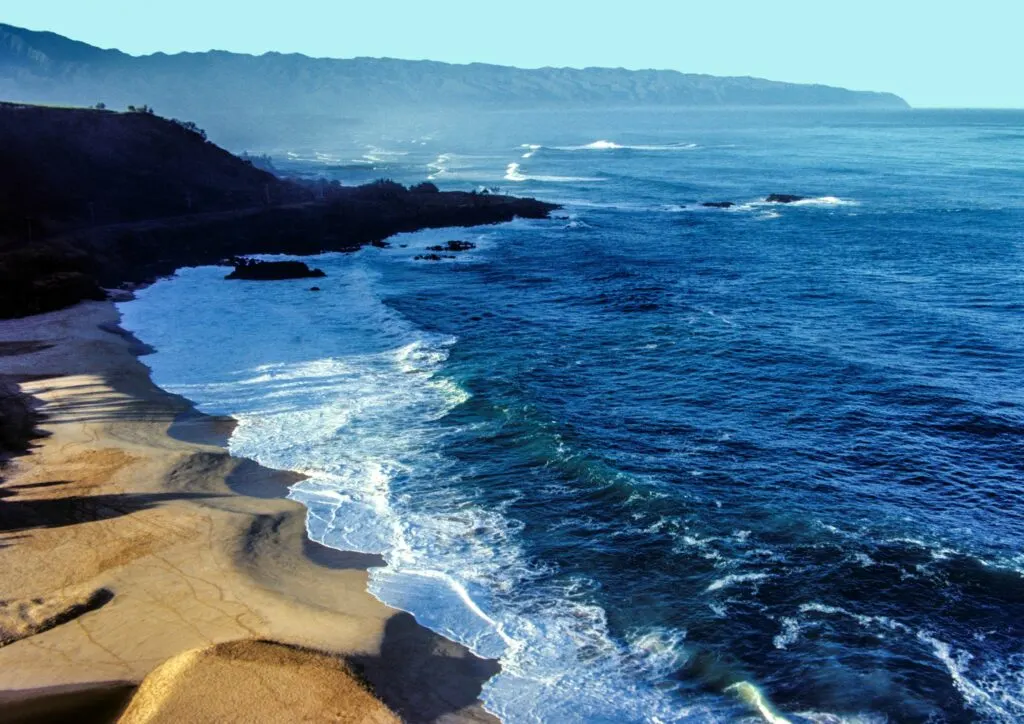
The jump at Waimea Bay Beach is a little less sketchy than the South Point, but it’s a drop of 30 feet.
The massive rock in the middle of the beach is what you jump off of. And the waters are deep enough, so you won’t hit the rocks at the bottom.
This cliff-jumping point is located at Waimea Beach Park – not Waimea Valley – and getting here involves a thirty-minute drive from Waikiki. Also, there’s no ladder for you to get to the beach, so you will have to swim back.
The bay has created a safe spot for swimmers and cliff divers, but you should check the weather and water conditions before doing the jump.
The beach also features facilities like picnic areas and restrooms, and there’s also a volleyball court.
Maunawili Falls
Maunawili Falls jump is about 40 feet high and is a little tricky because the cliff is a little slanted. To get here, you need to hike through a tract of wilderness, which is an experience of and in itself. And you’ll also find several smaller jumps along the way.
There’s a warning sign saying no cliff jumping and swimming, but tourists do cliff jump here, but you will be doing it at your own risk.
The water is deep enough, and there is little chance of you hitting the bottom. But always check the water conditions before you fling yourself off the cliff.
Waimano Falls
One of the most stunning falls in Oahu, Waimano Falls is located in Pearl City. The hike to the falls is quite easy as it’s mostly downhill, but getting back can be tricky as it’s uphill.
You’ll find two massive pools here where you can swim, and the jump is about 15 feet. Check the water depth before you do the jump; it’s usually deep enough, but you should check all the same.
There’s also a rope swing to try out.
Spitting Caves
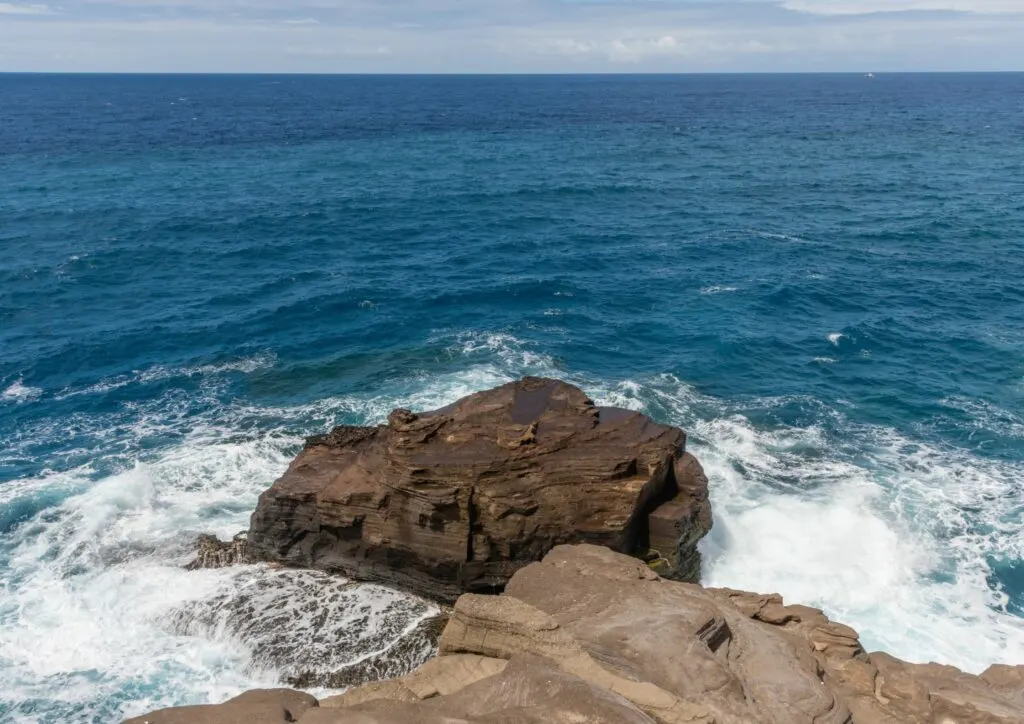
Located on the southern edge of Honolulu, Spiting Caves offer a 70-foot jump depending on where you jump from – there are also lower ledges you can take the plunge from. This is a great spot for other activities like whale watching, enjoying the sunset, and relaxing as well.
You will be mesmerised by the view once you get to the cliff, but the wide expanse of the choppy waters can also make you a little queasy. This is a small cave facing the inlet. As the cave fills up with water, pressure builds up with every wave crashing into the cave, spitting out water with great force – hence the name Spitting Caves.
The water is generally deep enough and the landing zone is clear of rocks. However, cliff diving can only be recommended for only experienced athletes with prior experience.
If you are new to Hawaii and cliff jumping, you probably should get here with someone who understands the conditions of cliff jumping.
Kapena Falls
After a 15-minute hike through a cemetery and a tract of tropical greenery, you’ll get to Kapena Falls, which offers a 35-foot jump!
Kapena Falls is rather a small waterfall with a pool deep enough for cliff jumping. Rocks are painted with graffiti, so it doesn’t make for a scenic experience, but if you move away from the rocks, you’ll see the pond surrounded by banyan trees.
Check the water depth before jumping, and because there’s a waterfall, rocks can get washed off into the pool, which makes cliff jumping here quite dangerous – if you don’t feel safe enough to do the jump, you can just sit on a cliff and relax; this is a great spot to contemplate and wind down.
Do not drink water from the pool, and you shouldn’t jump if you have any cuts or wounds. Also, don’t leave your valuables unattended.
Laie Point
Another Oahu cliff diving spot found off the North Shore, Laie Point offers a 30 to 40 feet high jump. Once you get to the area, the cliff is about 30 feet further away. There isn’t a parking lot, but you can park your car on the side of the road.
If you are here during winter, you shouldn’t attempt cliff jumping as the winds are strong and the waves are too intense. But you can do some snorkelling at Sharks Cave, located close by.
There’s a wide table rock right at the bottom of the cliff. When you jump, make sure you jump to the left of the table. During the winter, the strong waves hide the table. The waves wash off pretty quickly but don’t ever jump if you can’t see the massive rock.
To climb back up, you have to grab onto the table rock and get to the crevice. This is a very sharp lava rock, so be careful and wear protective shoes if you can.
Always check the water depth before doing the jump, but keep in mind that it’s always better to see if others do the jump and take your lead from them.
The Mokes
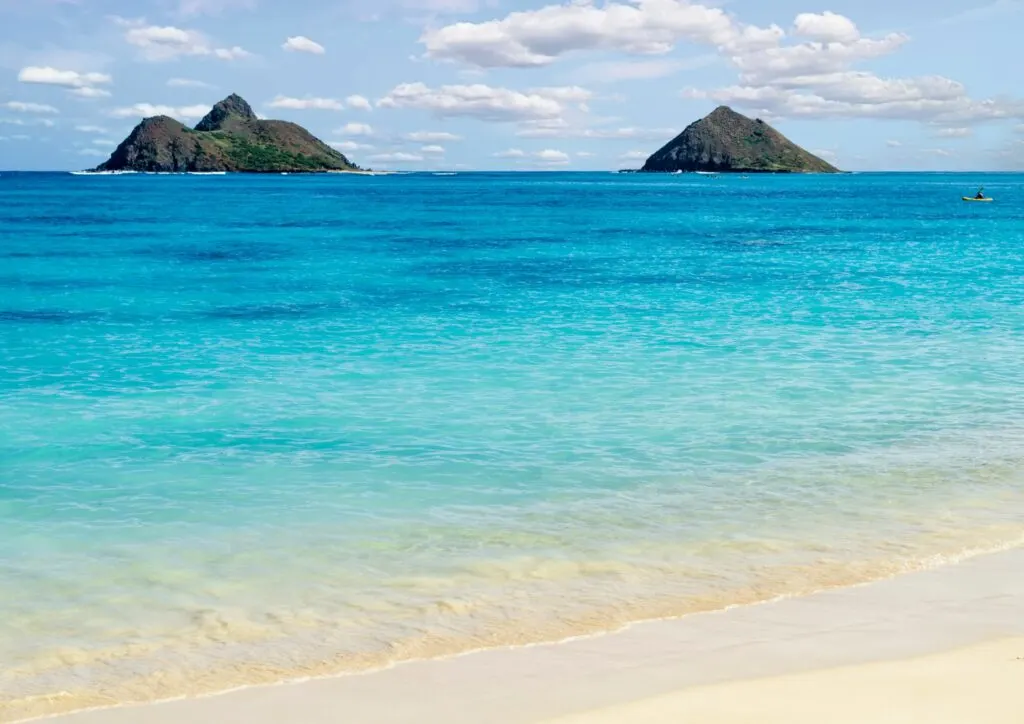
Cliff jumping at the Mokes is one of the most thrilling activities you can enjoy in Hawaii. There are about four different ledges with varying heights.
The Mokes are two islands located off the shore of Oahu; this is one of the most photographed places in the US. The islands are also part of a bird sanctuary, so you can do some birdwatching once you’ve had your fill of adventure.
The jump can be quite dangerous because the ocean here is laden with lava rocks, and the currents are sometimes extremely strong – they are strong enough to drown you, and there have been a few reported accidents.
Always check the water conditions before jumping, and it’s best if you are accompanied by a friend.
Lulumahu Falls
This is one of the best cliff diving spots you can find in Hawaii, but Lulumahu Falls is on private property and cliff jumping here is illegal. But tourists get here after the challenging and rewarding hike, and they do the jump. But only experienced cliff divers should attempt the jump at Lulumahu Falls.
We advise you to take a good look around before plunging into the water. If you have even the slightest doubt, you should just enjoy the scenery and be on your way back to safety.
Maui
Black Rock Beach
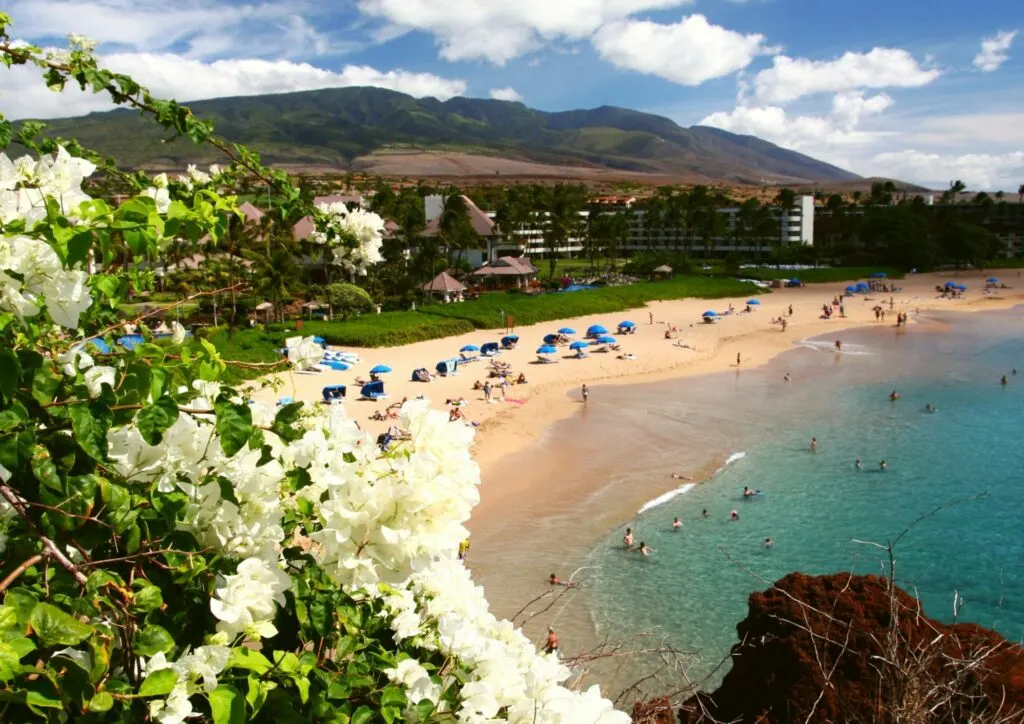
Located off Ka’anapali Beach, Black Rock is a great cliff jumping spot and a popular snorkelling site. Black Rock is also known for the Sunset Cliff Diving Ceremony.
The jump is about 12 to 15 feet high, depending on the ledge you jump from.
If you park at the Kahekili Beach parking lot, you need to head southward to get to the rock, but if you are coming from Whalers Village, you should walk north along the beach walk.
Be careful if you are here in the summer; Black Rock is a favourite spot with migratory sharks, so it can be quite dangerous.

